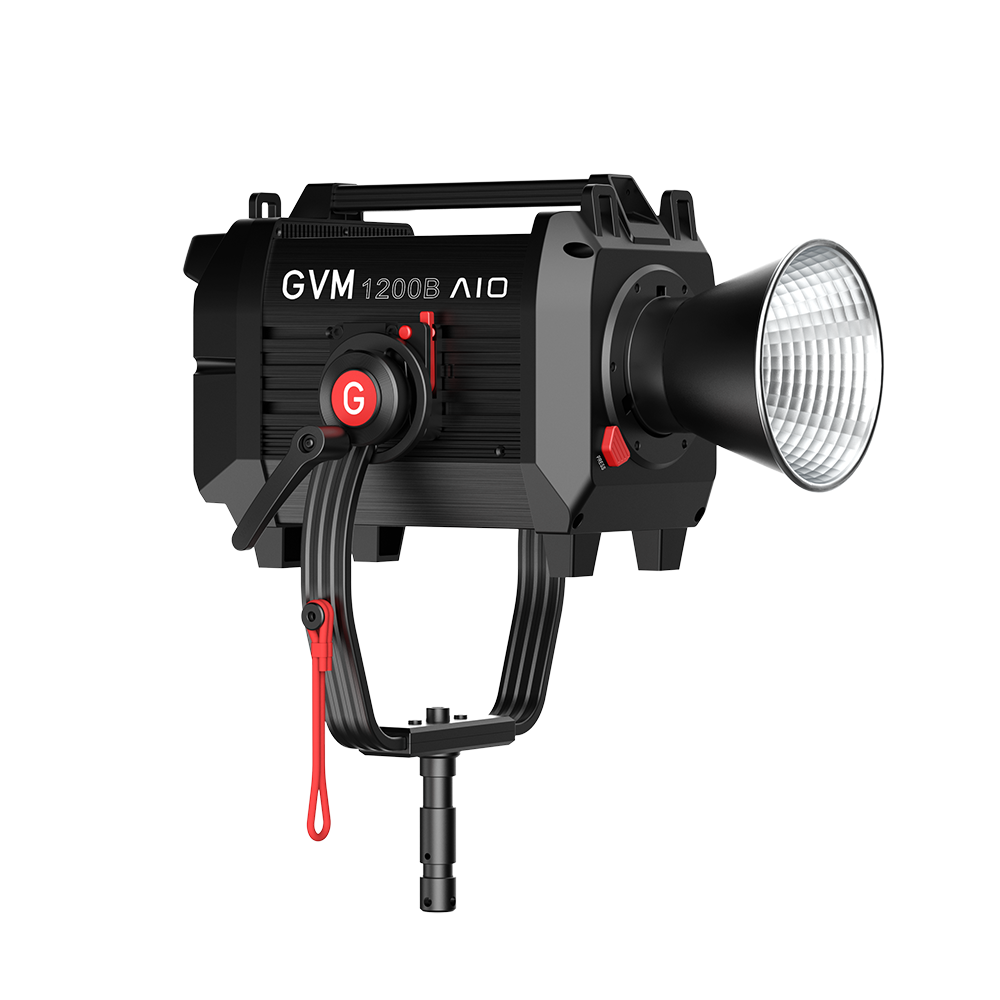In today’s rapidly evolving visual content landscape, lighting plays a pivotal role in every facet of creation, from film production, television broadcasting, and live streaming to commercial photography and product advertising. It not only shapes the mood and atmosphere of a scene but also accurately renders colors and elevates overall visual quality. Among the myriad lighting technologies, Led Studio Lighting is rapidly replacing traditional light sources, becoming the go-to choice for professional studios and production spaces due to its unique advantages.
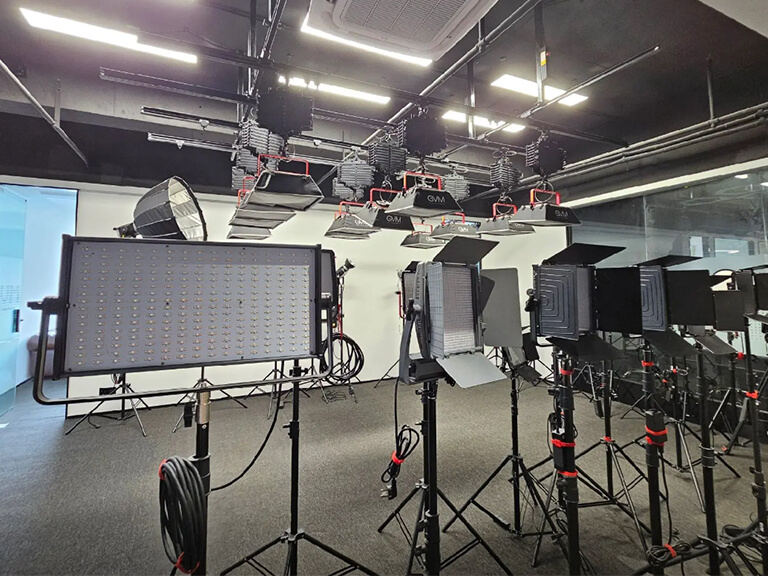
This article delves into the transformative nature of LED studio lights, exploring their core advantages, key technical parameters, different types and their applications, and offering guidance on how to select and optimize your Led Studio Lighting system to master the art of light and shadow.
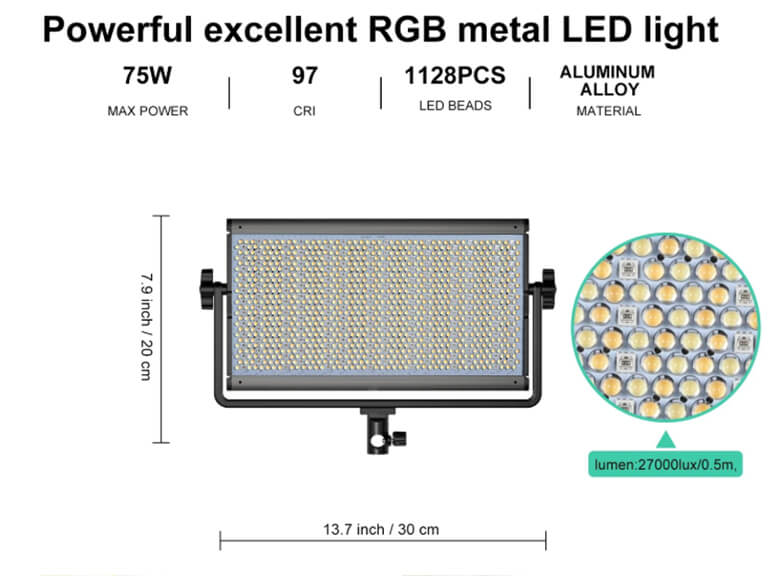
I. Why LED Studio Lighting is the New Industry Standard
Historically, photography and broadcast studios primarily relied on traditional light sources like tungsten, HMI, or fluorescent lamps. However, with the rapid advancements in LED technology, LED studio lights have emerged with unparalleled benefits, quickly dominating the market:
- Exceptional Energy Efficiency and Cost Savings: Traditional light sources consumed vast amounts of energy, with much of it wasted as heat. LED Studio Lighting boasts extremely high photoelectric conversion efficiency, consuming only a fraction – typically 1/5th to 1/10th – of the energy for the same brightness. This significantly reduces operational costs and carbon footprint.
- Extended Lifespan, Low Maintenance: LED chips have a theoretical lifespan of 50,000 to even 100,000 hours, far exceeding the mere hundreds or thousands of hours of traditional bulbs. This translates to fewer bulb replacements, lower maintenance costs, and more stable performance.
- Minimal Heat Emission, Enhanced Comfort: The immense heat generated by traditional fixtures not only made talent and crew uncomfortable but also increased the burden on HVAC systems. The low-heat characteristics of LED photography lighting create a much cooler and more comfortable working environment for production teams.
- Precise Color Control and High Color Rendition: This is arguably one of the most compelling advantages of Led Studio Lighting. Modern LED fixtures offer a continuously adjustable range of color temperatures, from warm white 2700K to cool white 6500K and beyond. They boast high Color Rendering Index (CRI) and Television Lighting Consistency Index (TLCI) scores, typically exceeding 95. This ensures colors are rendered truthfully and vibrantly, minimizing the need for extensive post-production color correction.
- Instant Start and Stepless Dimming: LED studio lights require no warm-up time; they’re instantly on, eliminating lengthy waiting periods. Furthermore, their stepless dimming function allows for smooth brightness adjustment from 0% to 100% without any color shift or flicker, offering immense creative freedom.
- Compact Structure, Lightweight, and Flexible: The modular nature of LED sources allows for more compact and lightweight fixture designs, making them easy to transport and set up. This is particularly advantageous for on-location shoots or studios with limited space.

II. Key Technical Parameters of LED Studio Lighting: A Deeper Dive
When selecting Led Studio Lighting, understanding its core technical parameters is crucial, as they directly determine the quality and suitability of the light:
- Color Temperature (CCT – Correlated Color Temperature): Measured in Kelvin (K), this describes the warmth or coolness of the light. Common LED studio lighting options offer Bi-Color (two color temperatures) or full-color RGBWW (Red, Green, Blue, White, Warm White) adjustment to suit various scene moods.
- Color Rendering Index (CRI) & Television Lighting Consistency Index (TLCI): These two parameters are crucial metrics for evaluating a light’s ability to accurately reproduce colors. CRI is widely used for general illumination, while TLCI is specifically designed for broadcast television and film production, offering a more precise evaluation of skin tones and complex colors. High-quality LED studio lights typically have CRI and TLCI scores above 95.
- Brightness & Power (Luminance & Power): Brightness is usually expressed in Lux (illuminance at a specific distance) or Lumens (total light output). Power is measured in Watts (W), representing the fixture’s power consumption. Higher wattage doesn’t automatically mean better; consider luminous efficacy (lumens per watt) for true efficiency.
- Beam Angle and Light Distribution: Different fixture designs result in varying beam angles, affecting the light’s spread. For instance, spot lights have a narrow beam for concentrated light, while panel lights offer a wide beam for softer illumination.
- Control Methods: Modern Led Studio Lighting supports various control methods, such as DMX512 protocol, wireless remote control, and Bluetooth app control, facilitating multi-light setups and scene presets.
- Flicker-Free: For video capture, especially at high frame rates, ensuring that the light does not flicker is paramount. High-quality LED studio lighting is engineered to be flicker-free.
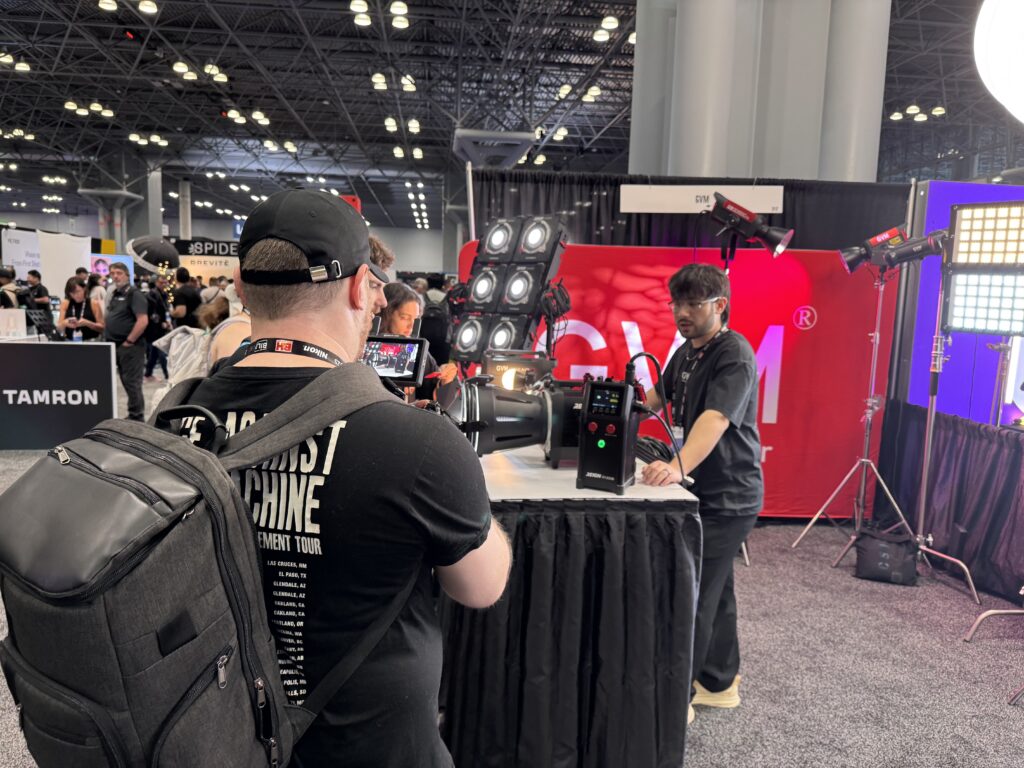
III. Exploring Different Types of LED Studio Lights and Their Applications
Led Studio Lighting comes in diverse forms, each with unique characteristics suitable for different shooting requirements:
- LED Panel Lights: These are the most common type of LED studio lights. They typically provide large, soft, even illumination, ideal for interviews, portrait photography, and general fill light. Their uniform output makes them easy to deploy.
- LED Fresnel Lights: Equipped with a lens, these lights can focus light into a more concentrated beam, creating defined shadows and intense textures. They are often used as key lights, rim lights, or for selective area lighting, widely applied in film and theatrical productions.
- COB LED Lights (Chip-on-Board): COB technology integrates multiple LED chips onto a single substrate, achieving high brightness in a compact size. These fixtures often feature standardized mounts (e.g., Bowens mount), allowing them to be paired with various light modifiers (like softboxes, snoots), making them ideal for versatile studio setups.
- LED Tube Lights / Light Wands: With their linear design, these lights are lightweight and portable. They can be used for background accents, practical effects, hidden illumination, or as subtle catchlights for subjects, adding creative elements to your shots.
- LED Ring Lights: Positioned around the camera lens, these lights provide shadowless, soft illumination to the subject’s face, making them particularly popular for makeup tutorials, vlogging, and video conferencing, creating a distinctive circular catchlight.
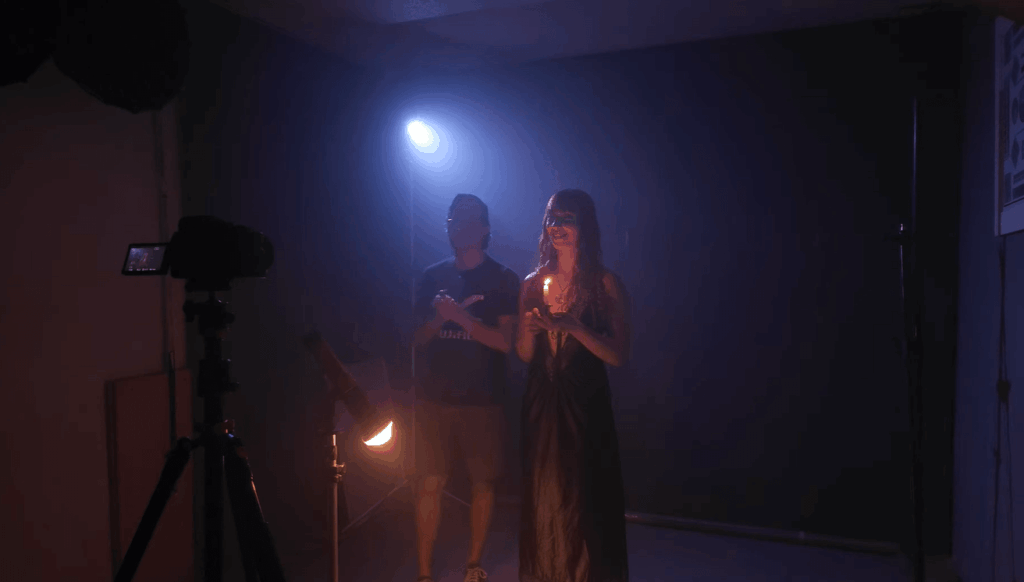
IV. Choosing and Optimizing Your LED Studio Lighting System
Selecting the right Led Studio Lighting system requires careful consideration of budget, shooting type, studio size, and future expansion possibilities:
- Define Your Needs: What content will you primarily be shooting? Product photography, portraits, video interviews, or large-scale commercial productions? This will determine your requirements for brightness, color accuracy, and light shaping capabilities.
- Prioritize Quality and Color Accuracy: Opt for brands with CRI and TLCI scores consistently above 95 to ensure true color reproduction. While the initial investment might be slightly higher, high-quality LED studio lighting will save you significant time in post-production color grading in the long run.
- Consider Brightness and Coverage: Choose fixtures with sufficient brightness for your studio size and shooting distance. For larger scenes, you may need a combination of multiple high-power LED photography lighting units.
- Accessories and Compatibility: Check if the fixtures support various light modifiers (e.g., softboxes, grids, reflectors) and if they are easy to install. Standardized mounting systems offer more flexibility for future expansion.
- Control and Convenience: Wireless control and DMX capabilities can significantly enhance workflow efficiency, especially in multi-light setups or when remote operation is needed.
- Budget and Brand Reputation: Set a realistic budget and choose reputable brands that offer quality products and excellent after-sales service. You can start with a basic kit and gradually upgrade.
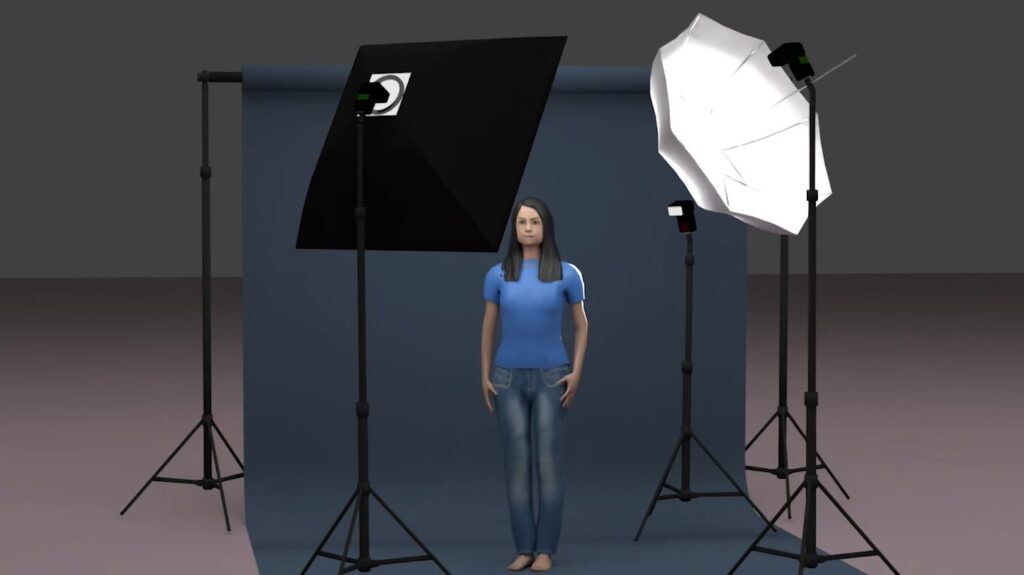
Optimizing Your LED Lighting Setup:
- Three-Point Lighting Setup: The classic combination of key light, fill light, and back light is fundamental for creating a three-dimensional image.
- Utilize Light Modifiers: Softboxes, umbrellas, and diffusion fabrics effectively diffuse light, reduce harsh shadows, and create a softer, more natural look.
- Control Ambient Light: A controlled studio environment allows for better light control, preventing unwanted light interference.
- Experiment with Background and Accent Lighting: Use LED tube lights or RGBWW panel lights to add color and depth to your background, enriching the overall composition.
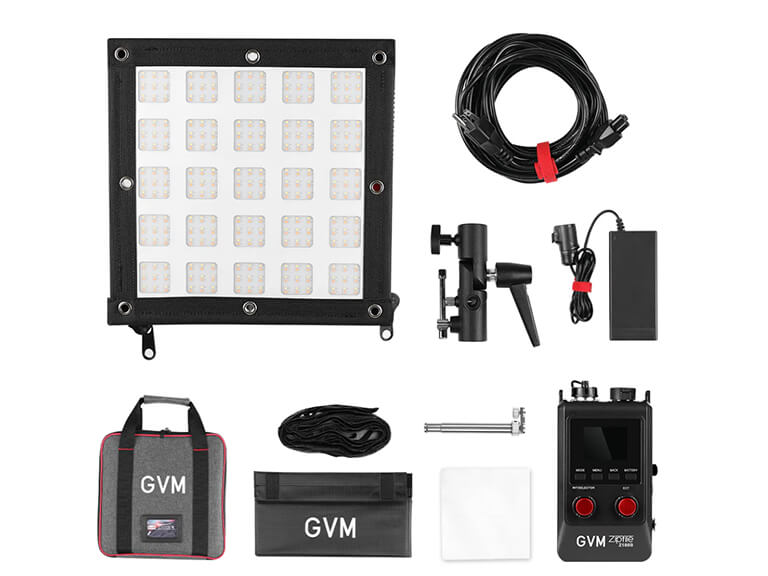
V. The Future of LED Studio Lighting
The future of LED Studio Lighting is vividly clear: it will be characterized by increased intelligence, efficiency, and profound integration. We foresee AI-driven automated lighting setups, hyper-accurate color rendition surpassing current standards, and even more durable, longer-lasting designs. Concurrently, wireless DMX, cloud-based control, and seamless integration with cameras and other equipment will become mainstream, collectively building a holistic ecosystem that empowers creativity and elevates production quality, truly making light an infinite canvas for storytelling. This future is not a distant dream.
The GVM Ziptile Series LED Studio Light stands as a pioneer of this transformation. It perfectly embodies the essence of future illumination with its exceptional modular design (like its unique dual lamp splicing for effortlessly wider and softer light), precise color rendition, ultimate energy efficiency, and unparalleled portability and versatility. By choosing the Z100B, you’re not just acquiring a light; you’re investing in a future-ready system that will empower you to confidently step into a new era of visual storytelling, where light is no longer a challenge, but your expansive creative canvas.
Conclusion
Led Studio Lighting has unequivocally transformed the way professional visual content is produced. Its energy-efficient, powerful, precise, and flexible nature offers photographers, videographers, and content creators unprecedented creative freedom and convenience. Investing in high-quality LED studio lights is not merely a purchase; it’s a strategic investment in your future creative potential. By selecting the right LED photography lighting system and mastering its usage, you’ll be empowered to effortlessly master light and shadow to craft truly stunning visual masterpieces.


